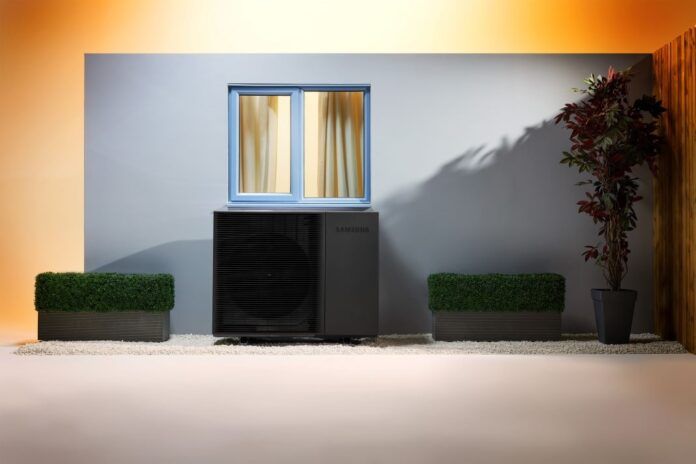
Samsung has announced the UK launch of the company’s most advanced air source heat pump to date.
The EHS Mono HT Quiet has been released, as the “next generation high temperature, low noise heat pump”.
The EHS Mono HT Quiet is the first in Samsung’s premium high temperature heat pump line up. It will be available in the UK from the start of November in three capacities – 8, 12, and 14KW.
With the heat pump market burgeoning in the UK, growing by an estimated 64% between 2020 and 2021, a statement said Samsung had brought a durable and low carbon heating solution to the sector designed to disrupt the status quo.
It said with so many homes in the UK using radiators which require hot water temperatures of 65°C or more to heat rooms effectively, there’s been a perception that heat pumps, which normally operate at temperatures between 40°C – 60°C, won’t suffice.
The Mono HT Quiet can provide hot water of up to 70°C for domestic heating purposes, meaning older residential spaces that have been heated by gas boilers now have a viable way to transition to heat pumps, according to Samsung.
Wim Vangeenberghe, president, Samsung Electronics Air Conditioner Europe, said: “With the Future Homes Standard requiring new build homes in the UK to be future proofed with low carbon heating by 2025, change is afoot and we’re likely to see an acceleration in the switch from fossil fuel heating systems to more energy efficient heat pumps.
“High temperature heat pumps are presenting an interesting alternative for homeowners looking to move away from traditional heating solutions, such as gas boilers, without compromising on performance.”
Joseph Raftery, heating product manager at Samsung Climate Solutions, added: “The HT Quiet is a huge step forward in the greener heating journey, helping to take the UK closer towards net zero ambitions with appropriate government and industry support. Not only can it match boiler leaving water temperatures and is our quietest unit yet, we’ve also stress tested our new heat pump to reliably provide 100% heating performance even in extremely cold weather as low as -25°C so this is technology you can rely on.”
